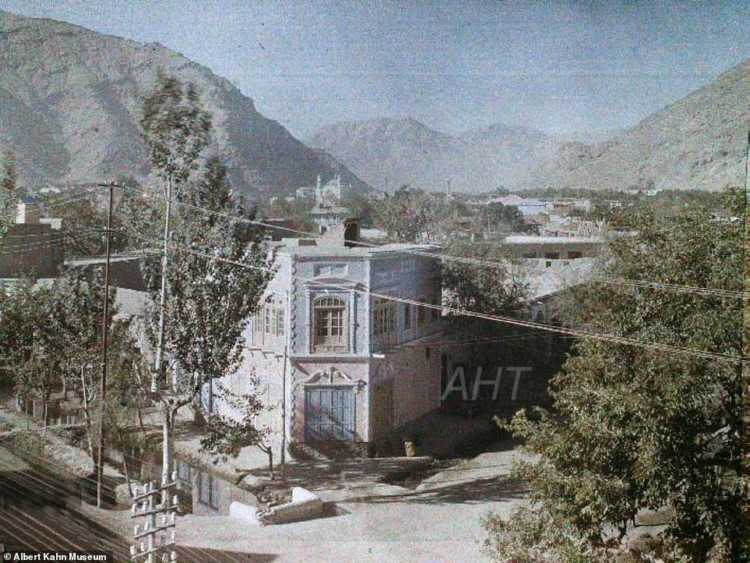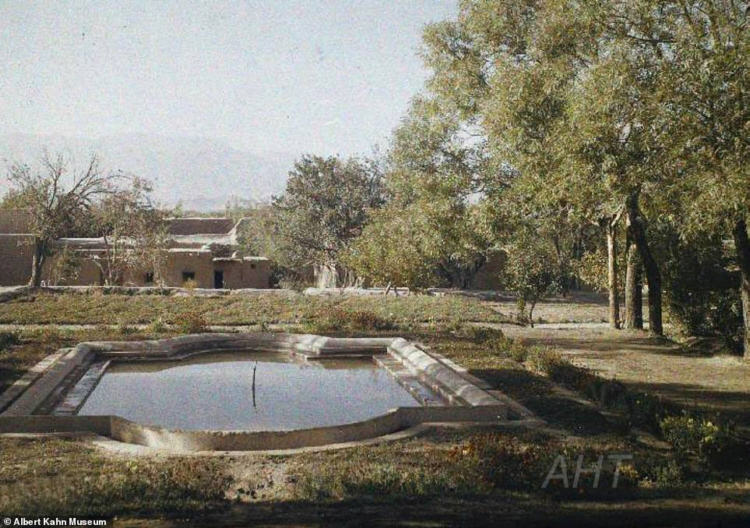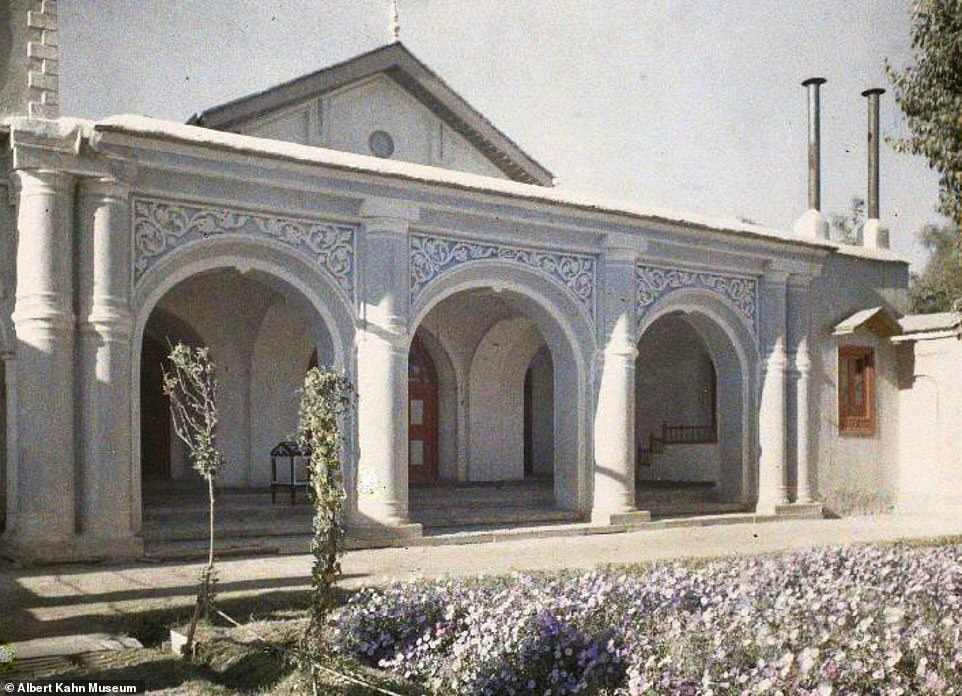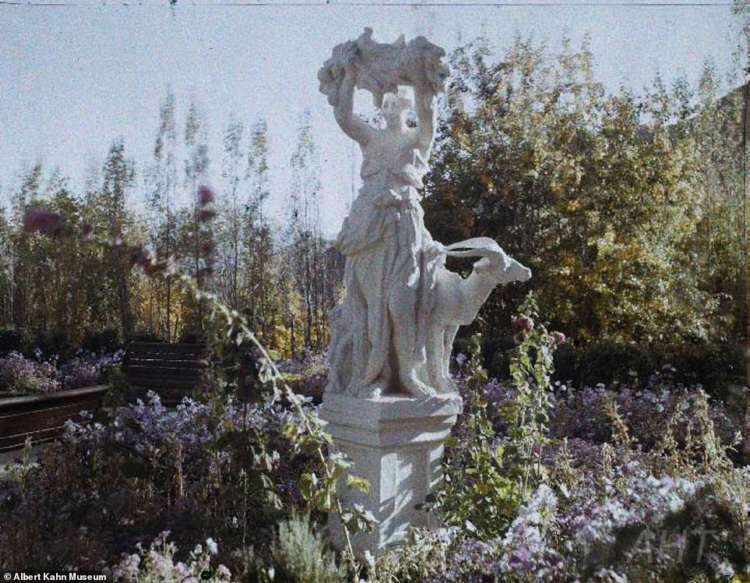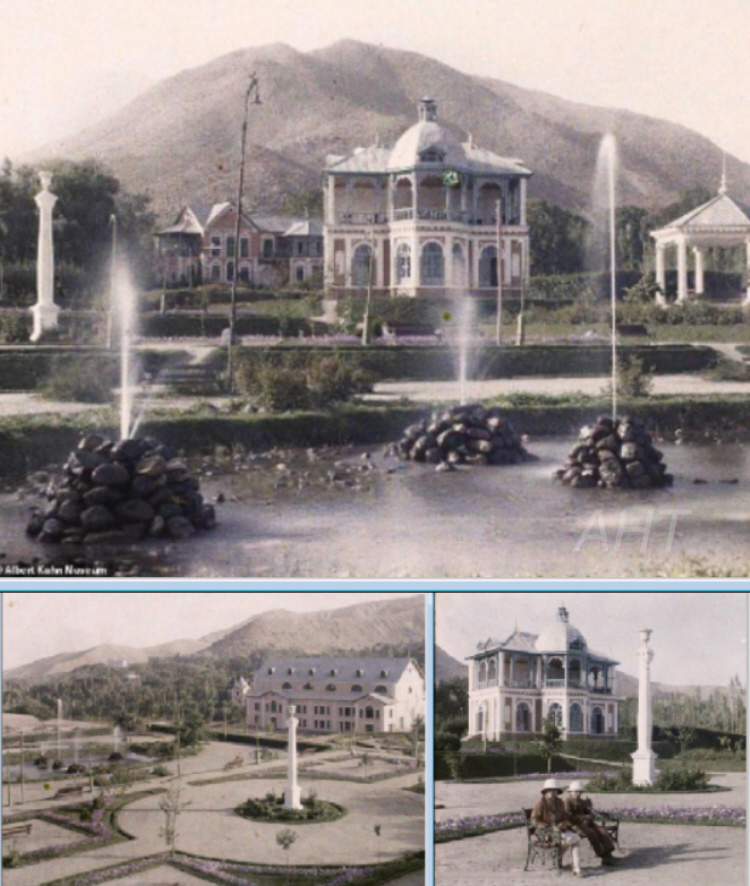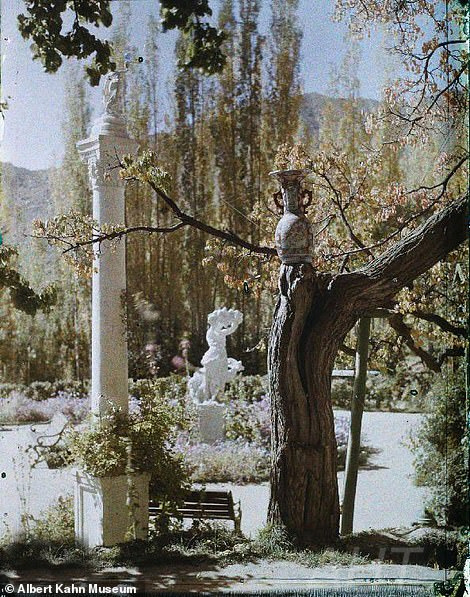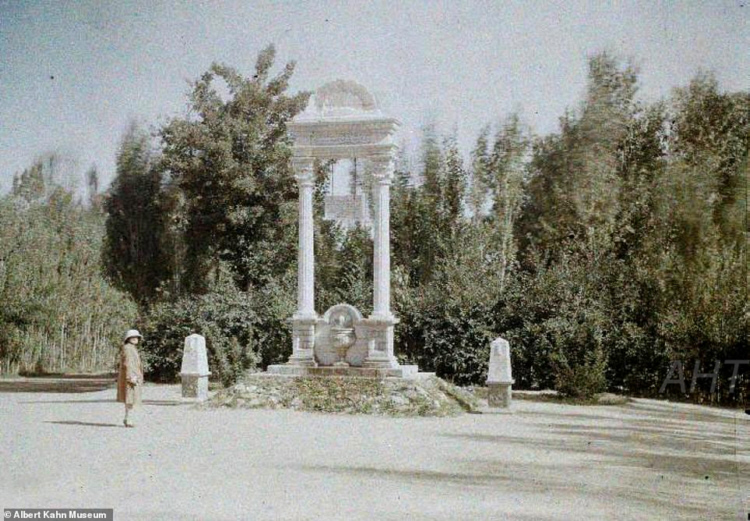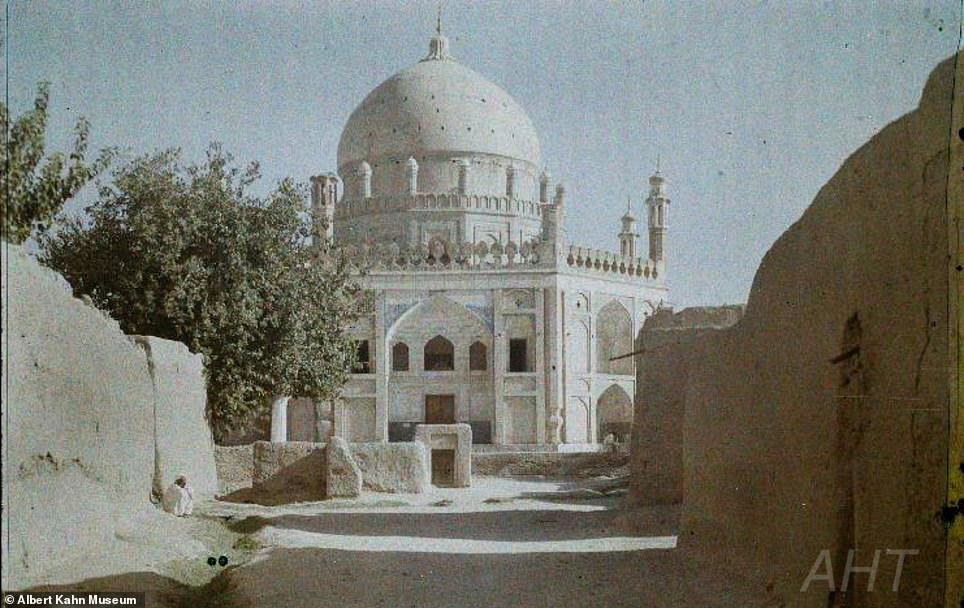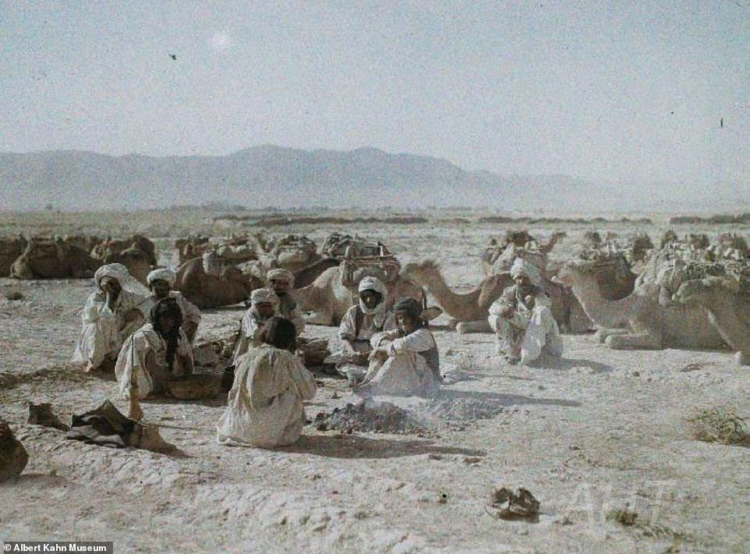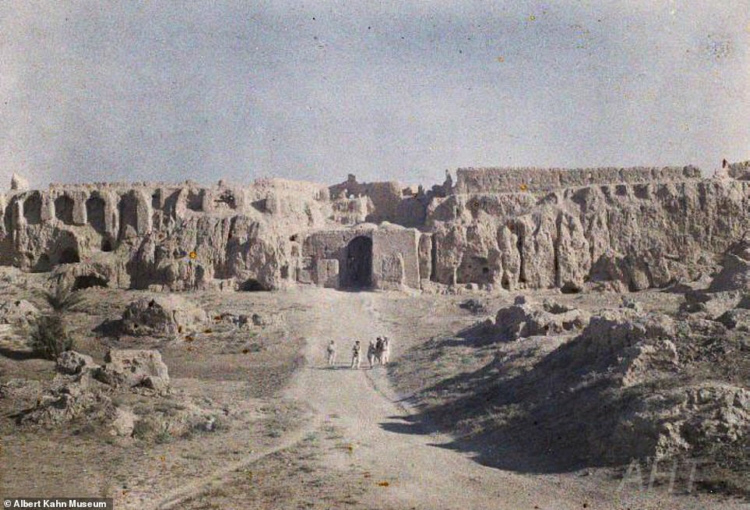(Afghan Hound Database and Breed Information Exchange)
Compiled by Steve Tillotson, February 2019
BACKGROUND TO THESE RARE PHOTOGRAPHS TAKEN IN 1928
(Source Davis Hunter - http://www.davishunter.com/home/place/Kabul) - "The 1930s- 60s were good times in Kabul.. Kabul University was opened; the roads were paved; modern shops, offices, & schools were opened; shopping centers and a cinema were opened; and the Kabul Zoo opened.. The city also saw a vibrant tourism industry appear, largely due to the Istanbul New Delhi " Hippie Trail " which passed through Kabul in the 1960s 70s.. The 1970s 80s brought a turn for the worse. The city saw two coups, in 1973 and 1978. The second coup was carried out by the Marxist PDPA, which a year later invited the Soviet military to maintain their power over the country. From 1979-1989, the Soviet Union maintained military and governmental headquarters in Kabul. After the Soviets left, the government collapsed in 1992 and left local warlords to fight over the city leaving tens of thousands dead and (according to the UN) 90% of the city's buildings destroyed"..(End Davis Hunter snippet) An important dimension to these photographs is that they are symbols of how the region was becoming modern and prosperous, attracting western investment. They also reveal the beauty of the country from around its time of independence under sovereign rule in 1919 which would prevail into the late 1960's.
Some of our breed authors who have written about Afghanistan paint a picture of a country who's climate and terrain involve extremes of mountainous rocky highlands, sandy desert lowlands, temperatures between 120 degrees and sub zero and of the poverty and daily challenge of survival for the native people. That is all true of course. But in the cities that we associate with our founding breeders/importers (eg Kabul where some of the Ghazni hounds came from, Paghman where Claire and Laurence Peters hounds came from), civilazation was more advanced than traditional narrative suggests. These photographs show us some of the architecture and archeological wonders of Afghanistan, that we otherwise may never have seen.
KING AMANULLAH THE MODERNISER AND REFORMER 1919 to 1929 (From Wikipedia) -Construction of the Darul Aman Palace began in the early 1920s as a part of the endeavours of King Amanullah Khan to modernize Afghanistan. It was to be part of the new capital city called Darulaman, connected to Kabul by a narrow gauge railway. The palace is an imposing neoclassical building on a hilltop overlooking a flat, dusty valley in the western part of the Afghan capital. Designed by French and German architects, it was one of the first buildings in the country to get central heating and running water. Intended as the seat of a future parliament, the building remained unused and partially complete for many years after religious conservatives under Habibullah Kalakani forced Amanullah from power in 1929, and halted his reforms. In later years it served as the medical school for Kabul University, as well a warehouse, and the seat of several smaller ministries. The building was gutted by fire on December 14, 1968, and afterwards restored to house the Ministry of Defense during the 1970s and 1980s. In the Communist coup of 1978, the building was once more set on fire. Much of the building was damaged by tank fire during Shahnawaz Tanai's failed coup attempt on March 6, 1990. It was once again damaged in the 1990s as rival Mujahideen factions fought for control of Kabul. Heavy shelling by the Mujahideen left the palace a gutted ruin, and the Taliban targetted the palace in April 2012 causing further catastrophic destruction. Eventually it was decided to develop a new building opposite the palace to house the parliament, with Indian help. Construction was completed in 2015.
Amanullah Khan was the sovereign of the Kingdom of Afghanistan from 1919 to 1929, first as Emir and after 1926 as Malik (King). After the third Anglo-Afghan War, Afghanistan was able to pursue an independent foreign policy free from the influence of the United Kingdom, and his rule was marked by dramatic political and social change. He was the first Afghan ruler who attempted to modernize Afghanistan on Western designs. Amanullah enjoyed early popularity within Afghanistan and he used his influence to modernise the country. Amanullah created new cosmopolitan schools for both boys and girls in the region and overturned centuries-old traditions such as strict dress codes for women. He increased trade with Europe and Asia. He also advanced a modernist constitution that incorporated equal rights and individual freedoms with the guidance of his father-in-law and Foreign Minister Mahmud Tarzi. His wife, Queen Soraya Tarzi played a huge role in regard to his policy towards women. This rapid modernisation created a backlash and a reactionary uprising known as the Khost rebellion which was suppressed in 1925. Amanullah travelled to Europe in late 1927 and arrived in Britain in February 1928 as guests of King George V and Queen Mary. (End Wikipedia)
See also Wolfgang Renner's Photos from Afghanistan 1965 - 1972 Davis Hunter blog on Afghanistan Ghazni Afghan Hounds Section. Steve Tillotson 2013 Lieut-Colonel L.W. Amps and Mrs Mary Amps By Steve Tillotson and Lyall Payne Nov 2013 Lt. Amps and Mary Amps "Nice Buddha; nice set of wheels" By Llewellyn Morgan (Oxford, England Sep 2013 The Hound In Afghanistan, Mary Amps, 1932 The Land Of The Afghan Hound, Mary Amps, 1930 A Brief Sketch Of Afghanistan/Pakistan/India History (Author Steve Tillotson, June 2013) Afghan Hounds In India, Steve Tillotson, 2012 Afghan Controversy What is the correct type? Amps and Bell Murray Bill Hall Meeting/Interview with Major-Genl Amps 1970's Susan (Sirdar of Ghazni daughter)- Identity Revealed. Lyall Payne and Steve Tillotson Sept 2015 Early Afghan Hounds Section The Origins Section |

